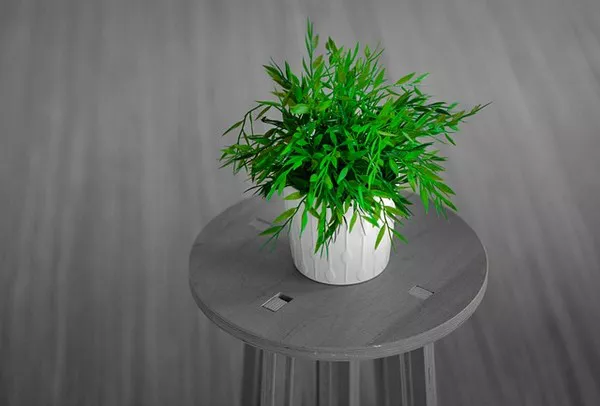Proper hydration is essential for the well-being of all living organisms, and plants are no exception. Adequate water supply is crucial for plants to carry out essential biological processes, including photosynthesis, nutrient absorption, and cell growth. As responsible gardeners and plant enthusiasts, it is our duty to ensure that our green companions receive the right amount of water to thrive. In this article, we will delve into the various aspects of how to keep plants hydrated, from understanding their water requirements to implementing effective watering techniques.
Understanding Plant Water Requirements
Before diving into the intricacies of keeping plants hydrated, it is crucial to grasp the fundamental principles of their water requirements. Each plant species has unique hydration needs based on factors such as their natural habitat, size, age, and growth stage. Here are some key considerations:
Species-Specific Requirements: Different plant species have varying water requirements. Some plants, like succulents, prefer infrequent watering, while others, such as ferns, need consistently moist soil. Research the specific needs of your plants to provide optimal care.
Soil Type: The type of soil in which your plants are growing plays a significant role in water retention. Sandy soils drain quickly and require more frequent watering, while clay soils retain moisture for longer periods. Amending your soil with organic matter can improve its water-holding capacity.
Climate: Local climate conditions, including temperature, humidity, and rainfall, influence your plants’ water needs. Plants in hot and arid climates generally require more frequent watering than those in cooler, humid regions.
Plant Size and Growth Stage: Young plants and newly transplanted ones typically need more water as their root systems are still developing. Mature plants have established root systems that can access water deeper in the soil.
Container vs. Ground Planting: Potted plants often dry out more quickly than those planted in the ground. Ensure containers have adequate drainage and consider using a potting mix formulated for your specific plants.
Effective Watering Techniques
Now that we have a foundation in plant hydration requirements, let’s explore some effective watering techniques to ensure your plants remain adequately hydrated:
Watering Depth: It’s crucial to water deeply to encourage the development of deep root systems. Shallow watering promotes surface roots, making plants more vulnerable to drought. Water until the soil is moist at least 6-8 inches below the surface for most plants.
Morning Watering: Watering early in the morning allows plants to absorb moisture before the heat of the day, reducing the risk of fungal diseases. Avoid evening watering, as it can leave foliage wet overnight, increasing susceptibility to diseases.
Drip Irrigation: Drip irrigation systems deliver water directly to the plant’s root zone, minimizing water wastage and evaporation. They are especially useful for larger gardens and landscapes.
Mulching: Applying a layer of organic mulch, such as wood chips or straw, helps retain soil moisture by reducing evaporation. Additionally, mulch regulates soil temperature and suppresses weeds that compete for water.
Watering Frequency: Instead of adhering to a strict watering schedule, monitor the moisture level of the soil. Stick your finger into the soil to check its moisture content. Water when the top inch or two feels dry, but avoid letting the soil become bone-dry.
Rain Barrels: Collecting rainwater in barrels is an eco-friendly way to ensure a sustainable water source for your plants. Use this stored rainwater for watering during dry periods.
Grouping Plants: Grouping plants with similar water requirements together in your garden can help you water more efficiently. This practice, known as hydrozoning, ensures that plants with higher water needs receive the attention they require.
Container Drainage: When planting in containers, ensure proper drainage by using pots with drainage holes. Elevating containers slightly on pot feet or bricks can prevent waterlogged roots.
Use a Watering Can or Hose Nozzle: When hand-watering, use a watering can or a hose nozzle with a gentle spray pattern to control the water flow. Avoid using high-pressure jets that can damage delicate foliage.
Signs of Overwatering and Underwatering
Properly assessing your plants’ hydration status is vital to avoid both overwatering and underwatering. Here are common signs of each condition:
Overwatering:
Yellowing or browning leaves: Overwatered plants may exhibit leaves that turn yellow or brown and fall off prematurely.
Wilting: Paradoxically, overwatered plants can show signs of wilting as their roots suffocate and become unable to take up water.
Mold or mildew growth: Excess moisture on leaves and soil can encourage the growth of mold and mildew.
Foul odor: A musty or rotten smell coming from the soil is a clear sign of overwatering.
Edema: Some plants develop blisters or bumps on their leaves or stems due to excess water uptake.
Underwatering:
Wilting: Underwatered plants often wilt as they lose turgidity (water pressure in cells).
Crispy or yellowing leaves: Leaves may become dry, crispy, and develop yellow or brown edges.
Slow growth: Lack of water hinders a plant’s ability to photosynthesize and grow.
Dry soil: The soil appears visibly dry, and the pot feels light when lifted.
Conclusion
Keeping your plants adequately hydrated is a fundamental aspect of successful gardening and plant care. By understanding your plants’ individual water requirements and implementing effective watering techniques, you can ensure they thrive and remain healthy. Remember that the key to plant hydration is not simply watering more but watering smartly and attentively. Regularly monitoring the moisture level of your soil and responding to the specific needs of your plants will contribute to their long-term well-being, vibrant growth, and lush beauty.


